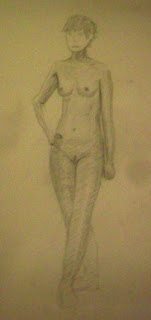Film: - The Fly (1986)
Director: - David Cronenberg
Writer(s): - Charles Edward Pogue, David Cronenberg
Cast:
Jeff Goldblum - Seth Brundle
Geena Davis - Veronica Quaife
This remake of the 1958 classic has relatively little in common with the original. The only thing in terms of plot that the two films have in common is the splicing of a scientist and a fly after experimenting with teleportation. Other than this they go in very different directions.
In the 1986 version of The Fly the protagonist, Seth Brundle, is secretly working on a teleportation device because he doesn't like vehicles. After several failed attempts at telepoting organic materials and getting involved with a journalist, he finally works out all the kinks in the device. He then decides to test it on himself which appears to be success with the added bonus of super strength and agility. There was however a fly in the teleportation pod with Seth and he soon starts to show the effects of the fly DNA physically and mentally.
The metamorphosis of Seth into the Fly shows similarities to a body wasting disease, specifically aids, as apposed to the original's simple body part swapping:
"Cronenburg's The Fly (1986) is most persuasively to be claimed as "an aids movie" when it centers on bodily declension (at least when considered from the human point of view) and the negotiation of disgust between the erstwhile lovers" -
The politics of popular representation: Reagan, Thatcher, AIDS, and the movies, by Kenneth MacKinnon
The fear of aids was very high at the time as people didn't know much about it. The film reflects a number of fears related to aids such as transmission to another generation as shown by Veronica wanting to abort Seth's baby as she is afraid it will be "deformed". Even though Seth becomes a monster he is still portrayed as a victim of the disease and never quite loses his humanity. At one point he tells Veronica to leave as he is worried that he might hurt her, he is also worried that he might be contagious.
"The monsters were becoming victims and protagonists who's difference provoked empathy and facination as much as horror..." -
Film, horror, and the body fantastic, by Linda Badley
This film really goes down the gore route which I found quite hard to watch as I'm not very good with that sort of thing! It does however manage to use this to show how horrific disease can be reinforcing the fears people have of it.
"Cronenberg's direction in
The Fly features many of his stylistic stereotypes-dark, grayish tones, somber moods, ambiguous, gruesome biological masses and sex scenes that make us queasy as much as they titillate." - Classic-horror.com review, by Brandt Sponseller






















